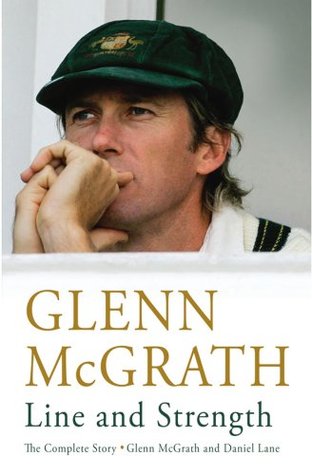Kindle Notes & Highlights
but he was happy to be with two of his mates from the Fast Bowlers’ Cartel (the team within the Australian team whose membership was restricted to individuals who could hurl a ball from one end of a wicket to the other at speed in baking heat, when they were bone-weary and mentally hammered).
‘I hadn’t cemented my place in the team and I listened to all the people who said you have to bowl consistent swing bowling to be considered successful at Test level,’ recalls McGrath. ‘It took me away from my game plan, which was being a seam bowler who hit the deck. I wanted to be successful, and while I did start swinging the ball, I couldn’t control it.’
The television and radio commentators waxed lyrical about McGrath’s batting record, pointing out that he vied for the record number of ducks in Test history, or perhaps noting that Steve Waugh had once said a pair of old stockings had more runs in them than McGrath. There was also the story of the time Waugh – who was within reach of becoming just the seventh Australian to score 200 against the West Indies – had consoled himself, at the sight of McGrath taking guard, that 197 not out in the Caribbean would be something to tell his grandkids.
you could count the number of deliveries he bowled down the leg side throughout his career on one hand.
watch Glenn bowl – that’s different. I’d put my sunglasses on and go to sleep. It [Hookes’ view] might look shithouse when it appears in black and white, but that is a huge compliment to Glenn … it’s not a derogative comment at all. But why would you go to watch Glenn McGrath bowl? He’s just going to concede 2.8 runs per over or whatever it is, take his four wickets – two in the first session and two in the last – and then get in his car and go home.’
‘It was one of the first times I was at state training and I remember thinking to myself that I wouldn’t get out to him: I won’t get out to McGrath,’ says Haddin. ‘The first four balls all landed in the same spot and I let them go. As I congratulated myself for doing so well against McGrath I noticed he smiled at me. He just smiled. The next ball landed in exactly the same spot and I played it exactly the same way. However, instead of going away off the seam, it crashed into my off stump. He’d used those first four balls to set me up and then made me look like a goose. He was world-class – he
...more
‘The only time I ever saw Glenn struggle was when someone took him on,’ Waugh says. ‘Abdul Razzaq did when we played Pakistan in a one-dayer. He knew Glenn had that mastery of line and length, and, in some ways, that was also a weakness, because as a batsman you knew where the ball was always going to be pitched. However, very few people had the ability – or the courage – to take him on.
‘The two things that always held me in good stead were that I knew my game well and I knew myself very well. It helped for me to be successful, knowing who I was; knowing how I worked best and always looking for ways to improve and learn. I always thought I was fairly stable emotionally and mentally. My highs were never all that high and my lows were never all that low. I was always controlled – but other guys had massive highs and the downside was they suffered terrible lows.
Test cricket’s most lethal combination: Warne and McGrath. Their skill and statistics had provided similarly comfortable mattresses for Ponting’s predecessors, Mark Taylor and Steve Waugh. In the 104 Tests Pigeon and Warnie played together, they captured 1001 wickets – 513 of those to the skill and cunning of Warne’s leg spin, and 488 to McGrath’s relentless line and length. And in those 104 Tests they celebrated 71 victories and suffered only 18 defeats.
‘But being paid wasn’t the reason I played. That was secondary. I enjoyed my time in cricket – I knew what I wanted, I was proud of what I achieved and I made some great friendships that will last for a long, long time.
Legend has it he told the crestfallen South African, ‘You’ve just dropped the World Cup, mate.’ In the Australian dressing-room,


